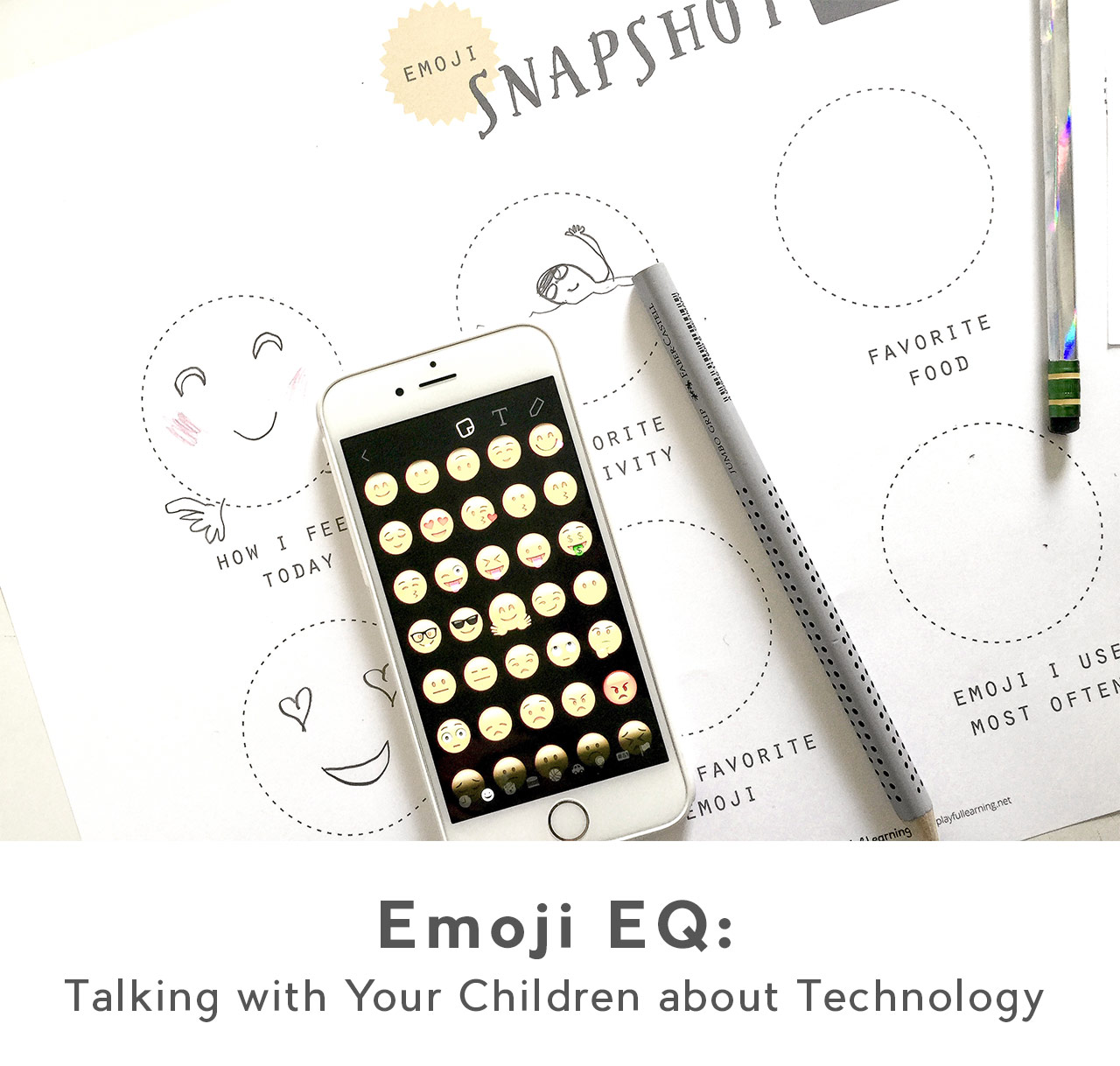Emoji EQ: Talking to Children About Technology

I may have just stumbled upon the golden ticket to opening up meaningful conversations with tweens and teens about technology!
We started the Digitally Savvy workshop in the Studio on Saturday. It’s been an interesting experience developing the curriculum for this workshop. I have a tough crowd to please—my 11 and 13 year old daughters are participating. I was humbled when a few days before our first session they looked me in the eye and said, “Mom, please don’t tell us this class is going to be about how much time we spend on our phones and online safety.” That very minute that I knew, I needed to take a different approach.
Yes, of course we want to get the message across that they need to make good choices about their time and they need to be aware of certain things to keep them safe, but before we have their ears, we need to establish an open dialogue.
So, I took some time to create an introductory learning experience that would help establish these important lines of communication in a fun and meaningful way. The Emoji EQ lesson acts as an ice breaker to get older children excited—to start them talking and to open up the conversation. You’ll be amazed at how everyone can relate to the language of emojis!

The tweens and teens couldn’t wait to get started and were giddy and full of enthusiasm as they shared their emoji experiences. I highly recommend that you do this activity with your children as the discussions that ensue are priceless. Our conversations went from emojis as a form of communication, to cyber-bullying, to the politics of group chats on text messages. I realized how important it is to meet children where they are. If we start with our own agenda in mind, we will more often than not lose them. However, if we begin with their agenda in mind we can weave in our goals and thoughts throughout the activity.
Aside from the goals mentioned above, It’s also helpful to use emoji’s as an example of ways that things can be misunderstood when communicating through digital technology. We started by talking about the very first attempt that humans made to use pictures as a tool for communication—cave paintings. Then we moved on to hieroglyphs, then verbal and written language. I explained that once humans were able to communicate digitally, it became hard to express emotion and/or pick up on someone’s tone, so we invented emoticons :-), where we used an interesting combination of punctation marks to give our digital communication a bit more emotion. These emoticons then lead to the pictorial images (emojis) we have today, and although we don’t think much of them, I can assure you that our children are very aware of each and every emoji they use and why. I thought it was fascinating that they said they often have to use more than one to get there true meaning across. We were very amused when we realized that all of us had different interpretations of what certain emojis convey and the implications that might have for developing possible misunderstandings.
Note: It’s really important to listen to your child’s ideas and responses throughout these activities, without judgement. We really just want them to open up and feel comfortable sharing their thoughts and experiences, and emojis are something this generation of tweens and teens love to talk about!
